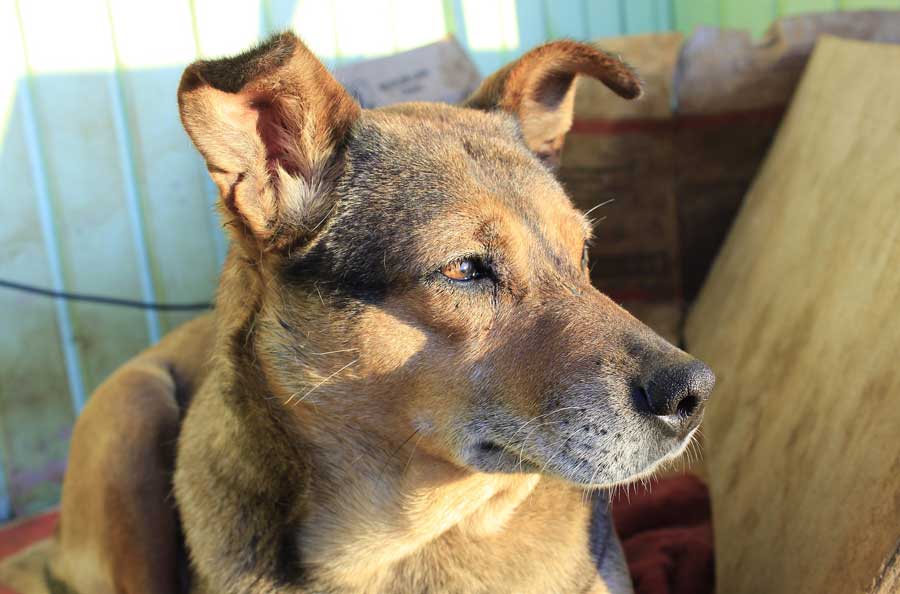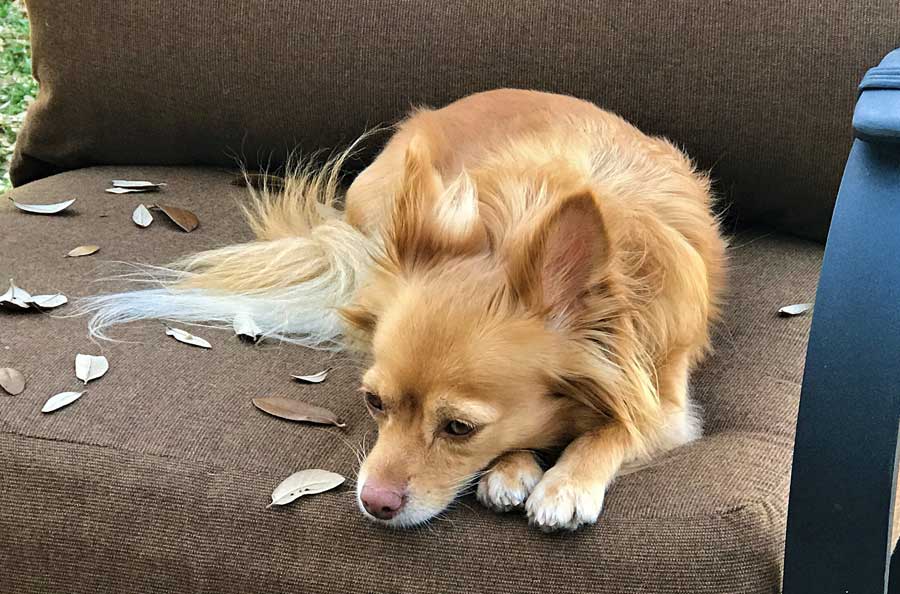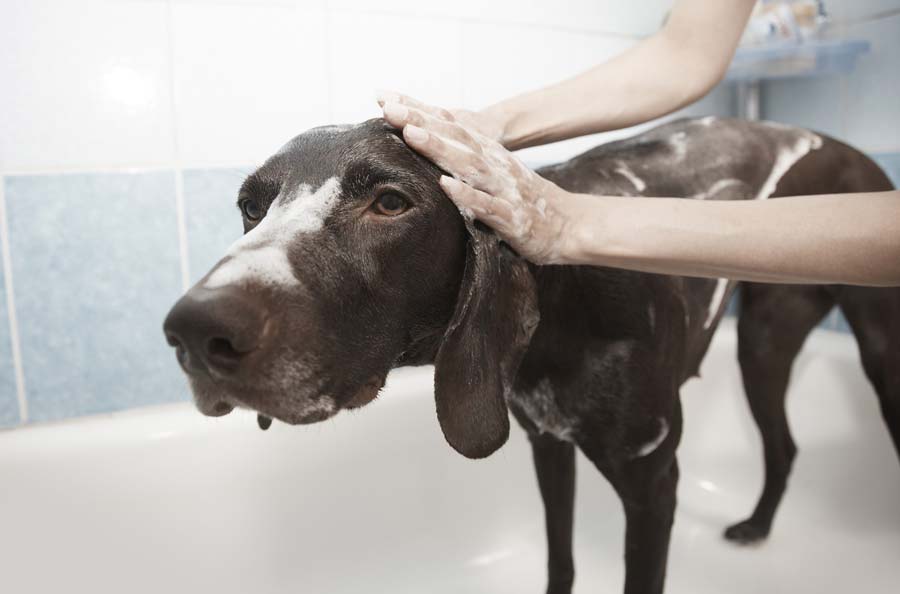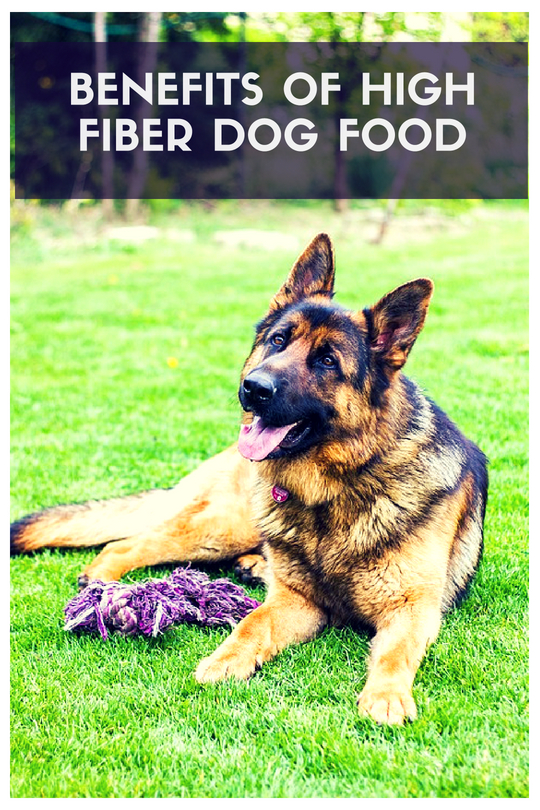Ringworm can be a common health problem for dogs. Left untreated, it can develop into a serious health issue, but for most dogs, the problem is more of an annoyance than it is a health crisis. If you suspect your dog might have ringworm or you aren’t sure why your dog isn’t himself and you’re wondering what might be the issue, it’s important to understand what causes ringworm, what the symptoms are, and how to treat it.
Dogs tend to be prone to a variety of parasitic health issues, many of which include a type of worm. For instance, tapeworms, hookworms, and roundworms are all common dog health issues, many of which arise during puppyhood.
Despite its name, ringworm is actually not a worm and isn’t even in the same category as these other issues. Ringworm is a fungal infection. It can affect dogs, cats, and other species of domestic animals, including humans.

Ringworm causes an elevated red ring to appear on the skin. Obviously, this is much easier to identify in species that aren’t covered with hair, so it can be tougher to spot ringworm on a dog. The infection grows in the outer layer of the skin and hair follicles of a dog’s coat. It can also grow on nails. It typically only affects a few areas of the dog’s body, though older and younger dogs and those with compromised immunity can experience more widespread infections.
Nearly three-quarters of all ringworm infections in dogs are caused by Microsporum canis, which is a bacteria. That same bacteria is responsible for about 98 percent of ringworm infections in cats and it is possible for the infection to spread between species. The other two fungi that cause ringworm include Microsporum gypseum and Trichophyton mentagrophytes, which together make up the remaining 25 to 30 percent of ringworm cases in dogs.
Nearly every species of domestic animals and livestock are at risk of getting ringworm. Humans, too, can get ringworm. It’s more commonly known as athlete’s foot. And like with dogs, the younger, older, and or immunocompromised. In humans, you’ll identify ringworm by the red, itchy patches of skin that are circular. You should contact your doctor if you notice anything like this on your or another member of your family and follow up with your veterinarian if you have any pets. Ringworm can be passed between dogs and humans, as well as back and forth between human and animal species.
Like many fungal infections, ringworm is spread through direct contact. If a dog comes in contact with an animal or person with ringworm or touches a contaminated object, the dog can develop the infection. The spores that cause ringworm can stay alive on an object for up to a year and a half after they’ve been contaminated. If your dog has ringworm or you suspect anyone or anything your dog comes into contact with could have ringworm, it’s important to keep a careful eye on the development of a fungal infection. Dogs are most prone to pick up ringworm by coming into contact with an infected individual or by touching combs and brushes, blankets, furniture, food bowls, or carpeting that has been contaminated.
The problem with ringworm isn’t the severity of the disease – it’s that it is so highly contagious. Remember how in elementary school when one child would experience a head lice infestation and the school would send a letter home to all parents alerting them to the problem? Head lice are far from a serious health issue, but the flutter of activity surrounding an outbreak sometimes made it seem as though it was. The problem was that head lice can spread like wildfire and important steps need to be taken to combat the outbreak.

The same is true with ringworm.
If your dog is groomed with other dogs, attends doggy daycare, or comes into contact with people and pets at all, you’re going to experience that same crisis outreach that occurs when a child contracts head lice and it’s because it is so contagious.
One of the differences though between head lice and ringworm is that ringworm requires medical attention.
Spotting the symptoms of ringworm as soon as possible can prevent a significant outbreak and prevent the issue from affecting everyone in your family and beyond.
Most dog owners recognize ringworm in their dogs when they notice a circular loss of hair in one or more spots on the dog’s body. A lesion typically develops in the bald spot and they can develop into a patchy, dry spot that looks like a scab or has some inflammation.
The patches of ringworm aren’t itchy, but because the infection affects hair follicles, your dog’s fur will fall out and further spread the disease everywhere he travels. Consider how often you dog sheds – every piece of fur he drops is potentially infected with ringworm, which makes it easy to see why there is so much concern over the spread of the infection.
The most common symptoms you’ll want to watch out for that are related to ringworm in dogs includes:
Keep in mind these symptoms can also be associated with other health issues, some of which are serious, so it’s important to contact a veterinarian if you notice any of these problems in your dog. Spotting ringworm early is an important part of preventing the spread of the infection, but identifying problems and addressing them as soon as possible if the issue is more serious could be a matter of life and death for your dog.
Ringworm can pass between animals and humans in a variety of ways. If anyone in your home is infected or your pets come into contact with anyone or anything that could potentially be infected, it’s important to understand how ringworm can be contracted.
The most common ways ringworm is passed from individual to individual include:

Though ringworm can be identified by the skin rash and hair loss on a dog, your veterinarian will perform a diagnostic test to officially confirm the diagnosis. In most cases, the doctor will take a sample of skin and hair cells and look at your dog’s skin under ultraviolet light.
Treatment is based on how serious the infection is and whether there are other pets in the home. You should also take into account whether or not anyone is living in your home who could face a greater risk if he or she developed a ringworm infection. For instance, if your dog shares space with children or elderly family members or there is someone in your home with a weakened immune system, it’s a good idea to take a more aggressive approach to treatment and preventing the problem from reoccurring in the future.
Most treatment plans are managed in three steps that include:
Topical treatment usually includes ointments or creams, as well as a medicated shampoo. All of these things will be given to you by your veterinarian. Some vets also trim a dog's nails if they are infected. In most severe cases or if your dog has a long coat, it’s also a good idea to include clipping or shaving to allow for easier access to the infected area of the skin. This can also help you determine if the patches are healing or if there are any additional patches of infection you’ve missed.
It can take several months or topical therapy to completely eradicate the infection. However, topical treatment is effective for protecting the environment and reducing the risk of ringworm spreading, so it’s a good idea to include it in your treatment plan, even if it is an inconvenience.
Oral therapy, which is usually done in addition to topical therapy, is needed for about six weeks. Your dog will take an antifungal oral medication daily for at least a month and a half after a ringworm infection is diagnosed.
Additionally, if there are other pets in the home, most veterinarians recommend also treating them with oral medication even if they have not yet developed symptoms. Ringworm is extremely contagious, so there’s a good chance that pets living in an enclosed environment together are going to share their infection. If one pet is infected and the others aren’t yet, assume the infection is on the way if you don’t take preventative measures to avoid contamination.

Humans won’t need to take preventative medication, but it is important to keep a close eye on any potential symptoms, especially if you have children living in your home or anyone else who could be at a heightened risk for developing a ringworm infection.
Symptoms of ringworm infection in humans include:
One of the most important factors in treating ringworm is being committed to completing the course of treatment. Six weeks or more is a long time to administer oral and topical medications to dogs, but in order for the fungus to be completely eradicated the long course of treatment is necessary. Just because the signs of symptoms of ringworm go away doesn’t mean your dog is cured and fully free of the fungus.
As a matter of fact, it’s highly unlikely your dog will be free of the fungus for at least six weeks after treatment begins, no matter how he or she is behaving or whether or not the skin patches clear up.
To know for sure that your dog is ringworm free, he or she will need to undergo another diagnostic test performed by your vet. This is the only way you can get the official “all clear” and know that ringworm was eradicated fully.
Finally, you’ll need to perform environmental decontamination of your home and any areas where your dog comes into contact with. Ringworm spores continue to be a problem for months after they’ve been dropped onto a surface. This includes sofas, grooming tools, bedding, clothing, cars, and more.
It might be wise to restrict your dog to only certain areas of the home until you know he or she is no longer contagious. At least this way you’ll have a limited space that needs decontamination. It’s also a good idea to restrict your dog into areas that are easier to clean, such as rooms with hard floors instead of carpeting.
Regardless of whether or not you limit where your dog spends his or her time while infected, you’ll need to vacuum or sweep the areas daily, making sure to remove all hair that has been shed.
There are some home remedies available for help in treating ringworm, but it’s important to speak to your veterinarian. In nearly every case, oral and topical antifungal medications will be needed. At-home remedies can support treatment given to you by your vet and could be effective in reducing the spread of ringworm.
Some of the most common at-home remedies include:

Your vet will give you an antifungal shampoo for your dog that will help eliminate any discomfort and over time, eliminate the fungal infection. In most cases, you’ll need to shampoo your dog every other day, but your vet can provide more specific instructions.
Apple cider vinegar is well known for its antifungal benefits. You won’t want to apply undiluted ACV to your dog’s skin, so cut it 50/50 with water and rinse your pet after bathing. You can do this with your dog’s regular bath to reduce the risk of contracting ringworm even if no symptoms are present. ACV is great for keeping your dog’s coat healthy and shiny.
Tea tree oil must be properly diluted. It not only helps with topical fungal infections, but it can also prevent your dog from picking up various other pests and getting bites because ticks and other bugs tend to dislike the fragrance.
Washing bedding and other materials your dog comes into contact with in bleach can keep contamination under control and reduce the risk of spreading ringworm. Keep in mind that bleach can remove the color from materials, so you’ll want to dilute it before adding it to the wash. It’s also a good idea to wash bedding and other potentially contaminated items on hot whenever possible.
Some owners swear by topical application of garlic to the infected patches when their dogs have ringworm.
The easiest and best way to “treat” ringworm is to prevent it from happening in the first place. Though it’s not really a serious health concern for dogs or people, it is a major inconvenience to deal with and treat when it occurs.
In order to prevent ringworm, you’ll need to keep your home clean and as free of dog hair as possible. This won’t prevent an infection, but it will prevent it from spreading to other members of your household as easily. Make sure you wash bedding and other materials your dog comes into contact with on a regular basis.
If your dog comes into contact with other animals, you should keep a careful eye out for symptoms of ringworm. Check your dog on a regular basis and carefully observe any skin issues or hair loss. If you have reason to believe your dog has come into contact with a confirmed case of ringworm, you can speak to your vet about a round of treatment. You don’t want to just treat ringworm preventatively for possible contact, but chances are if your dog was in contact with a confirmed case, he or she will develop an infection because the fungus is so contagious.
Ringworm isn’t the most serious health risk your dog faces, but it can be one of the most tedious, inconvenient, and time-consuming. The more you know about preventing and reducing the spread of ringworm the less you’ll need to worry.
Table of Contents
What Does Ringworm Look Like?
What are the Symptoms of Ringworm?
How is Ringworm Treated in Dogs?
How Do You Prevent Ringworm?
What are the Most Important Things You Should Know About Ringworm in Dogs?





